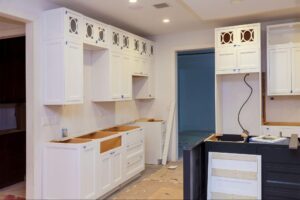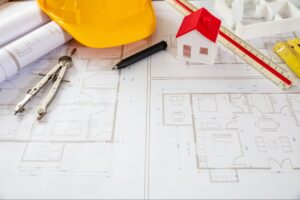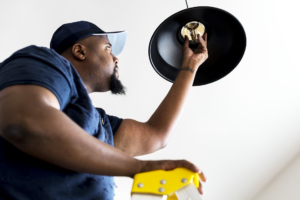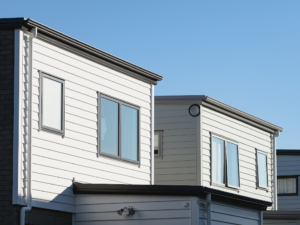Choosing the perfect flooring for your home has shaped its style, comfort, and practicality for years. Options like vinyl and laminate wood flooring have gained popularity due to their affordability and versatility, offering solutions that cater to diverse needs. Laminate wood flooring stands out for its timeless aesthetic, while vinyl delivers exceptional durability and water resistance. Comparing their features, benefits, and drawbacks ensures that laminate wood flooring or vinyl fits seamlessly into your lifestyle. Selecting the right option brings lasting value and enhances the overall appeal of your living space.
Laminated Wood Flooring and Its Uses
Laminate wood flooring is a multi-layer synthetic flooring product designed to mimic the appearance of natural hardwood. It consists of a durable wear layer, a printed design layer, a core layer for strength, and a stabilizing bottom layer. This flooring option is widely appreciated for its affordability, versatility, and ease of installation, making it a popular choice for residential and commercial spaces. Laminate wood flooring is commonly used in living rooms, bedrooms, and hallways, offering an elegant look without the maintenance demands of natural wood.
Advantages of Laminate Wood Flooring
Several advantages make laminate wood flooring a preferred choice among homeowners and builders. These benefits combine aesthetic appeal, durability, and practicality, providing excellent value for various spaces.
Durability and Longevity
Laminate wood flooring has a wear-resistant surface that withstands scratches, stains, and general wear and tear. This durability makes it suitable for high-traffic home areas, such as living rooms and hallways, where flooring must endure daily activity. Its multi-layer construction adds to its resilience, ensuring it maintains its appearance and functionality for years.
Easy Installation Process
The click-and-lock design of laminate wood flooring simplifies the installation process, making it an attractive choice for DIY enthusiasts. This feature reduces the time and effort required compared to traditional flooring options, cutting labor costs for professional installations. Its compatibility with most subfloors adds to its convenience, allowing it to be installed over existing surfaces with minimal preparation.
Low Maintenance Requirements
Cleaning laminate wood flooring is straightforward, requiring only regular sweeping and occasional damp mopping to maintain its look. The surface resists dirt and stains, so homeowners can enjoy a polished appearance without extensive upkeep. Its ability to repel moisture adds to its low-maintenance appeal, provided spills are cleaned promptly.
Aesthetic Appeal
Laminate wood flooring replicates the look of natural hardwood with realistic textures and finishes — this allows homeowners to achieve a high-end appearance at a more affordable cost, with options that suit traditional and contemporary interiors. The wide variety of colors and patterns ensures flexibility in design, making it a versatile flooring solution.
Cost-Effectiveness
Compared to hardwood, laminate wood flooring offers significant cost savings without sacrificing style or durability. Its affordability makes it accessible to a broader range of homeowners and builders seeking a premium look on a budget. Additionally, its long lifespan ensures excellent value for the initial investment, further enhancing its cost-effectiveness.
Vinyl Flooring and Its Uses
Vinyl flooring is a durable, versatile, cost-effective option made from synthetic materials. It comes in various forms, including sheets, tiles, and planks, allowing for various design possibilities. Known for its water resistance and low maintenance, vinyl flooring is a popular choice for kitchens, bathrooms, basements, and other high-moisture areas. Its ability to replicate the look of wood, stone, or tile while being more affordable makes it a favorite among homeowners and builders. Vinyl flooring provides aesthetic appeal and practical functionality, making it suitable for various residential and commercial spaces.
Advantages of Vinyl Flooring
Several advantages make vinyl flooring a preferred option for homeowners and builders. Its unique features combine durability, style, and convenience, offering significant benefits for different applications.
Water Resistance
Vinyl flooring is highly resistant to water, making it ideal for areas prone to spills, humidity, or moisture. This feature ensures that the flooring remains undamaged, even in kitchens, bathrooms, and basements. Its water resistance also contributes to its longevity, maintaining its appearance over time in challenging environments.
Durability
Vinyl flooring’s sturdy construction enables it to withstand heavy foot traffic and daily wear and tear. It resists scratches and stains, making it suitable for households with pets, children, or frequent activity. Its ability to endure harsh conditions without losing quality adds value and reliability.
Easy Maintenance
Vinyl flooring requires minimal upkeep, with regular sweeping and occasional mopping sufficient to keep it clean. Its smooth surface repels dirt and grime, making it a low-maintenance choice for busy households. Homeowners can enjoy a polished look without wasting time or effort cleaning.
Comfort and Noise Reduction
The softer surface of vinyl flooring provides a comfortable walking experience, reducing foot fatigue during prolonged standing. It also has sound-absorbing properties, which help to minimize noise levels in busy households. Underlayment can enhance these benefits, creating a quieter and more comfortable living space.
Cost-Effectiveness
Vinyl flooring offers a budget-friendly alternative to materials like hardwood and stone while replicating their appearance. Its affordability makes it accessible to many homeowners seeking style without breaking the bank. Vinyl’s long-lasting performance ensures excellent value for its cost, reducing the need for frequent replacements.
Differences Between Vinyl and Laminated Wood Flooring
Though vinyl and laminated wood flooring are durable and enhance a home’s aesthetics, they differ significantly in construction, application, and performance. These differences make each flooring type suitable for specific needs, ensuring homeowners and builders can choose based on their unique preferences. Exploring these distinctions provides a clearer understanding of how each flooring option caters to various environments and lifestyles.
Material Composition
Vinyl flooring is crafted from synthetic materials such as PVC, resulting in a flexible, water-resistant surface. Laminated wood flooring, however, is composed of a high-density fiberboard core with a decorative layer that mimics natural wood. Vinyl’s composition makes it a better choice for areas where resilience to moisture is critical. Laminated wood flooring provides a more authentic, appealing, wood-like experience for spaces prioritizing aesthetics. These material differences directly influence how the flooring performs in various environments and applications.
Moisture Resistance
Vinyl flooring is entirely water-resistant, making it ideal for kitchens, bathrooms, and basements where spills and moisture are common. Laminated wood flooring, by contrast, is prone to swelling or warping when exposed to water for extended periods. This limitation makes it unsuitable for spaces with high humidity or frequent water contact. Vinyl’s resistance to water ensures it retains its appearance and integrity, even in challenging conditions. Laminate is better suited for dry areas where aesthetics are prioritized over moisture tolerance.
Heat Sensitivity
Vinyl flooring effectively handles temperature fluctuations, maintaining its structure and appearance even in direct sunlight or near heat sources. Due to its wood-based core, laminated wood flooring is more prone to heat damage, such as warping or fading under prolonged exposure. Thus, vinyl is a reliable option for sunrooms or spaces with inconsistent temperatures. Laminated wood flooring performs well in temperature-controlled interiors but may show wear in extreme heat conditions. This difference highlights how each flooring type suits specific environmental needs.
Noise Levels and Acoustics
Vinyl flooring is quieter underfoot due to its softer material and inherent sound-dampening qualities. On the other hand, laminated wood flooring often produces a hollow sound, especially in spaces without underlayment. The sound produced by laminate can be reduced with high-quality padding but may not match vinyl’s quiet performance. Vinyl is an excellent choice for households prioritizing noise reduction, especially in multi-story homes or busy areas. Laminated wood flooring suits spaces where aesthetics matter more than acoustic performance.
Environmental Impact
Laminated wood flooring is often constructed using recycled wood, offering a more eco-friendly choice for environmentally conscious buyers. Vinyl flooring, while improving in sustainability, is still made from petroleum-based materials, which raises concerns about its long-term environmental impact. The recyclability of laminate depends on its construction, but it generally performs better in eco-conscious metrics than vinyl. Vinyl’s production process and material composition make it less appealing to those prioritizing green living. Choosing between these flooring types often depends on balancing sustainability goals with practical needs.
Understanding the Disadvantages of Vinyl and Laminated Flooring
Many factors come into play when considering vinyl and laminated flooring, especially when evaluating their disadvantages. While both materials offer durability and affordability, understanding their potential downsides ensures that homeowners make well-informed decisions. Exploring the drawbacks of each can highlight how these flooring options may or may not meet individual needs.
Disadvantages of Vinyl Flooring
Vinyl flooring offers durability and cost-effectiveness, making it a popular choice for many homeowners. Its benefits and drawbacks can affect its performance and suitability for specific spaces. Considering these disadvantages is essential for selecting the right flooring solution.
Susceptible to Scratches and Dents
Despite its durability, vinyl flooring can be easily damaged by heavy furniture, sharp objects, or improper cleaning tools. Frequent furniture movement without protective pads or exposure to heavy impacts may lead to unsightly dents and scratches. This characteristic makes it less suitable for high-traffic areas in homes with heavy furniture.
Limited Repair Options
Damage to vinyl flooring often requires replacing entire sections instead of performing minor repairs. Unlike other flooring materials, patching or sanding down imperfections is not an option. It can result in higher maintenance costs when sections become worn or damaged over time.
Environmental Concerns
Vinyl flooring is manufactured using polyvinyl chloride (PVC), which has raised concerns regarding its environmental impact. The production process releases emissions, and disposal can be challenging as it does not decompose quickly. Choosing vinyl flooring may not align with eco-friendly practices for those aiming for sustainable living.
Sensitivity to Heat and Sunlight
Prolonged exposure to direct sunlight or high temperatures can cause vinyl flooring to fade or warp. Over time, areas near large windows or sunny rooms may develop discoloration, reducing the aesthetic appeal. Additionally, heat sensitivity makes it unsuitable for areas with underfloor heating systems.
Disadvantages of Laminated Flooring
Laminated flooring has gained popularity for its affordability and versatility, but it has drawbacks that should not be overlooked. While it replicates the appearance of hardwood or stone, its composition and durability may not always meet long-term expectations. Understanding these disadvantages helps homeowners make informed choices for their spaces.
Prone to Moisture Damage
Laminated flooring is not water-resistant, and exposure to moisture can lead to warping, swelling, or buckling. Spills or leaks must be addressed immediately to prevent permanent damage. This vulnerability limits its use in areas like bathrooms or kitchens.
Noise Issues
Laminated flooring can produce hollow or echoing sounds when walked on, especially if underlayment is not installed. Noise levels can become more noticeable in multi-story homes or spaces with high foot traffic. This disadvantage may require additional soundproofing measures to create a quieter environment.
Less Comfortable Underfoot
The hard surface of laminated flooring can feel less forgiving and uncomfortable than other options like carpet. Standing for extended periods on laminated floors may lead to discomfort, particularly in spaces like kitchens, where people often stand for long periods. This lack of cushioning makes it less suitable for homes where comfort is a priority.
Shorter Lifespan
Laminated flooring has a shorter lifespan than natural materials, especially in high-traffic areas. Over time, the surface can wear down, leading to visible signs of aging, such as scratches or faded patterns. While regular maintenance can extend its life slightly, replacement may be necessary sooner than with other flooring types.
Comparing Vinyl and Laminated Wood Flooring
Vinyl and laminated wood flooring each offer unique qualities to enhance a home’s functionality and aesthetics. Vinyl flooring excels in moisture resistance and durability, making it ideal for kitchens and bathrooms. Laminated wood flooring offers the elegance of natural wood with a budget-friendly twist, perfect for living spaces. Analyzing their differences ensures the choice aligns with any home’s specific needs and design preferences. Balancing practicality and style makes selecting the right flooring a rewarding decision.
Visit our Build All Construction Inc.blog to explore more expert insights and tips on flooring options and home improvement.







